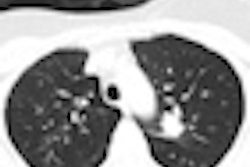Death from lung cancer continues to decline steadily among men living in Europe, according to a study of male lung cancer mortality in 33 countries published online on 20 February in Lung Cancer. But more than 187,000 individuals are still predicted to die from the disease in 2015.
Past and future mortality rates correlate with cigarette smoking trends of the past and current decades. In most European countries, mortality rates peaked in the 1980s to 1990s, at an age standardized rate of 53 deaths per 100,000. Between 2005 and 2009, the rate declined to 41.1 per 100,000.
However, analysis of trends shows the decline in recent years has been less than 2% per year. Even the overall rate for the European Union (EU) predicted in 2015 will be more than 35 deaths per 100,000 individuals, according to lead author Dr. Matteo Malvezzi of the department of epidemiology of the Istituto dei Richerche Farmacologiche "Mario Negri" in Milan. The authors put this in perspective by quoting the 2007 lung cancer mortality rate in the U.S. of 33.7 deaths per 100,000.
The rates of death vary considerably among EU countries during the 2005 to 2009 time period. Mortality rates were highest in Hungary, with 72.6 lung cancer deaths per 100,000 individuals, followed by Poland (62), Croatia (57.1), and the Baltic countries (52 to 54). Sweden had the lowest rate at 19.3 lung cancer deaths. Other Nordic countries as well as Portugal were also very low.
Mortality rates actually increased in Iceland, Portugal, Bulgaria, and Romania during 2005-2009, where use of tobacco is still high. The authors pointed out lung cancer deaths followed smoking and smoking cessation trends in the countries.
They predict lung cancer rates and death trends are likely to be more favorable in the future as currently only 25% of young men ages 20-25 currently smoke. In the 1980s, 60% of this age group used tobacco.



















